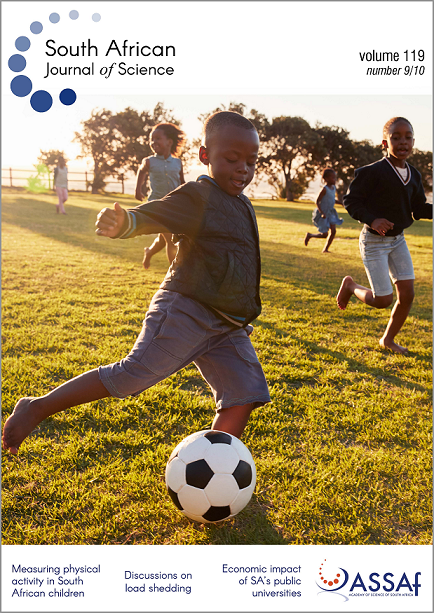The value of multibeam bathymetry in marine spatial planning in South Africa: A review
DOI:
https://doi.org/10.17159/sajs.2023/14320Keywords:
hydroacoustic surveys, benthic habitat, biodiversity, climate change, seafloor geomorphologyAbstract
Given a growing global population and shift to embrace the blue economy, a need for marine spatial planning (MSP) has emerged in South Africa to sustainably resolve the rising conflicts over the use of marine and seabed resources and services. A well-developed marine spatial plan yields numerous ecological, social and economic benefits. These are achieved through mediating between spatially conflicting economic drivers’ interests (e.g. commercial fishing, tourism, mining), preventing their activities from compromising thresholds of an environment’s sustainability. Within the MSP framework, high-resolution geospatial datasets are required to document and describe the seabed in the highest possible detail. At any scale, integrated analysis of seabed geomorphology and habitats is anticipated to greatly improve the understanding of ecosystem functioning from a multidisciplinary perspective, whilst improving MSP procedures and management of marine space. South Africa is the first of few African countries to have an approved and implemented MSP framework, but is still somewhat behind globally in implementing large-scale regional hydroacoustic surveys to cover the country’s vast offshore territory. The deficiency of hydroacoustic surveys is perhaps due to a relative lack of funds and poor communication about the value of multibeam echo-sounder (MBES) derived data, whilst marine geoscience remains a scarce skill in the country. This review paper presents a geological perspective of MSP and explores (1) the value that seabed mapping offers MSP specifically and (2) the need to increase seabed mapping with MBES, using a recently initiated project from the South African east coast as a case study.
Significance:
The collected MBES data (our case study) provides unprecedented seabed detail of the complex reef habitat and adjacent areas within specific management zones of the uThukela Banks Marine Protected Area. We reveal seabed features and their spatial distribution at a scale not possible using earlier (singlebeam) seabed mapping techniques. These high-resolution data will enable a better understanding of east coast marine habitats whilst contributing to improved spatial management of areas within and around the uThukela Banks Marine Protected Area.
Published
Issue
Section
License

All articles are published under a Creative Commons Attribution 4.0 International Licence
Copyright is retained by the authors. Readers are welcome to reproduce, share and adapt the content without permission provided the source is attributed.
Disclaimer: The publisher and editors accept no responsibility for statements made by the authors
How to Cite
- Abstract 556
- PDF 823
- EPUB 148
- XML 409
Funding data
-
National Research Foundation
Grant numbers MND210629616959 -
South African Institute for Aquatic Biodiversity












.png)